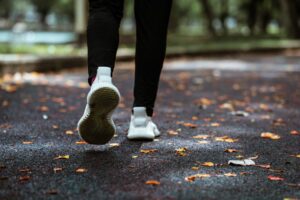Strength training is a key component to performance in sports, but it can be tricky to know what the best approach is. One way athletes can get the most out of their strength cycles is through neuro muscular efficiency. This article will discuss how neuro muscular efficiency can help athletes maximize their performance.
What Is Neuro Muscular Efficiency Testing?
Neuro muscular efficiency testing (NME) is a process that measures an athlete’s ability to recruit muscle fibers for a massive effort, say a 1RM Strict Press or Back Squat. Testing for NME doesn’t result in a good or bad assessment. It simple helps coaches identify weaknesses what method of training will have the most impact and benefit.
How Does It Work?
A common way of testing for NME is ad follows:
build to a back squat 1RM, then after 10-mins of rest, to do as many reps as possible at 85%
Based off the results from this test you will fall into one of three categories for NME, high, moderate or low. Again this is not good bad or anything other than great data your coach can utilize to program most efficiently for you.
High NME ( 1- 3 ) reps. You can recruit a large amount of muscle fibers for each rep, however you do fatigue faster.
If you get 4-7 reps, you’ve got roughly average or moderate NME. Meaning you are somewhere in between the high and low.
If you get 8+ reps, you’ve got low NME. You recruit less muscle fibers for each rep, giving you an ability to endure and continue working.
The Benefits of NME for Athletes
The main benefit of NME for athletes is improved performance and decreased risk of injury. By identifying weak areas in an athlete’s technique, coaches are able to design programs specifically tailored to address those weaknesses and improve overall performance. In addition, NME provides valuable insight into an athlete’s movement patterns and muscle fiber recruitment that can be used to adjust current strength training programs accordingly. Finally, NME gives coaches the tools they need to modify exercises as needed in order to maximize performance.
Neuro Muscular Efficiency (NME) can help athletes get the most out of their strength cycles by measuring muscle activity during exercises. With improved performance and reduced injury risk, NME is a great tool for any serious athlete looking to take their game to the next level!


